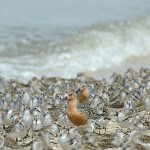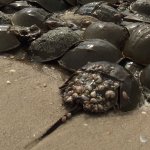Shorebird lovers on the Delaware Bay started this year’s season a little bit anxious. The weather was pointing to another repeat of 2017. A cold start to the season would mean low horseshoe crab spawning. Add to that the low numbers of Red Knots reported from aerial counts in Tierra del Fuego, and things were not looking good.
The weather warmed and crabs began to spawn, but was it enough to keep the birds here? All were holding their breath until results were in from the aerial count on May 24th. And it was good news. 34,500 Red Knots and 21,000 Ruddy Turnstones were counted, the highest for the last 15 years. Birds also departed with good weights, signally the likelihood of a successful conclusion to their journey in the Arctic.
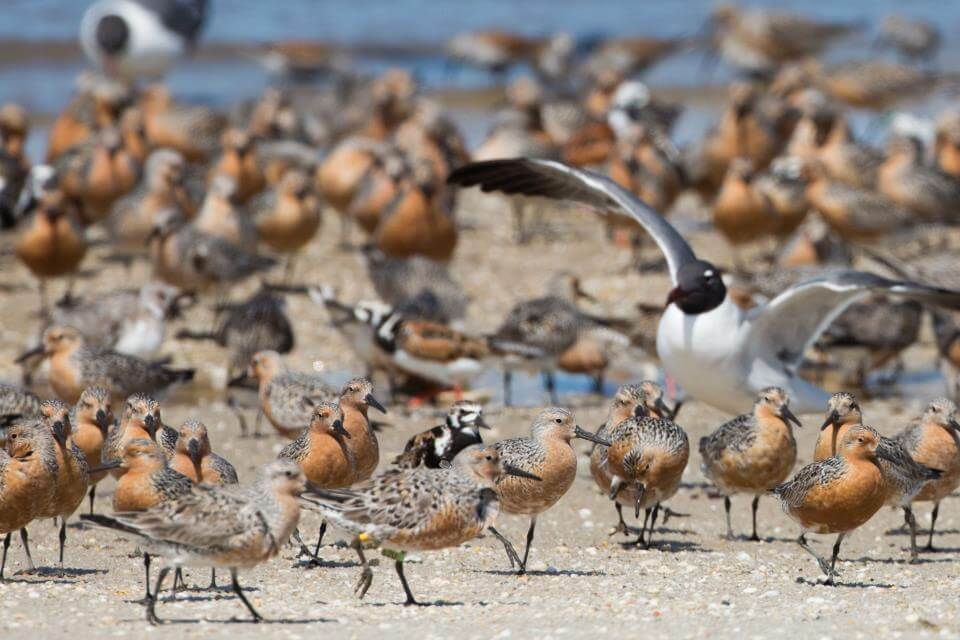
Red Knots and Ruddy Turnstones on Delaware Bay, accompanied by a Laughing Gull. Photo: Manomet Archives.
While it is good news, it is not time to pop the champagne yet. These good numbers do not indicate that the population is well on the way to recovery. They only mean that there was enough horseshoe crabs spawning to have high egg density on the surface. On years like last year (link to blog post) when the spawning didn’t pick up until late May there were very few eggs on the surface. This led to birds arriving and then taking off quickly when there wasn’t enough food to refuel. Last year the aerial count on the same day showed only 17,500 Red Knots.
What the good numbers can tell us is that Mother Nature was in the shorebirds’ favor this year. A few warm days in May warmed the water up to at least the required 57 degrees for horseshoe crab spawning, bringing large numbers of spawning crabs by mid-May.
When there are high numbers of crabs the birds do well, with even more crabs we would have a bigger buffer for the years when there is poor weather or other natural obstacles. Programs like limits on horseshoe crab harvest, beach restoration, and horseshoe crab rescue through reTURN the Favor all help to reduce the loss of horseshoe crabs. The use of a synthetic lysate by the pharmaceutical company, Eli Lilly, is another big step forward for crabs and shorebirds (More on this soon!). To maintain this year’s good news, these efforts to reduce horseshoe crab mortality must be continued.
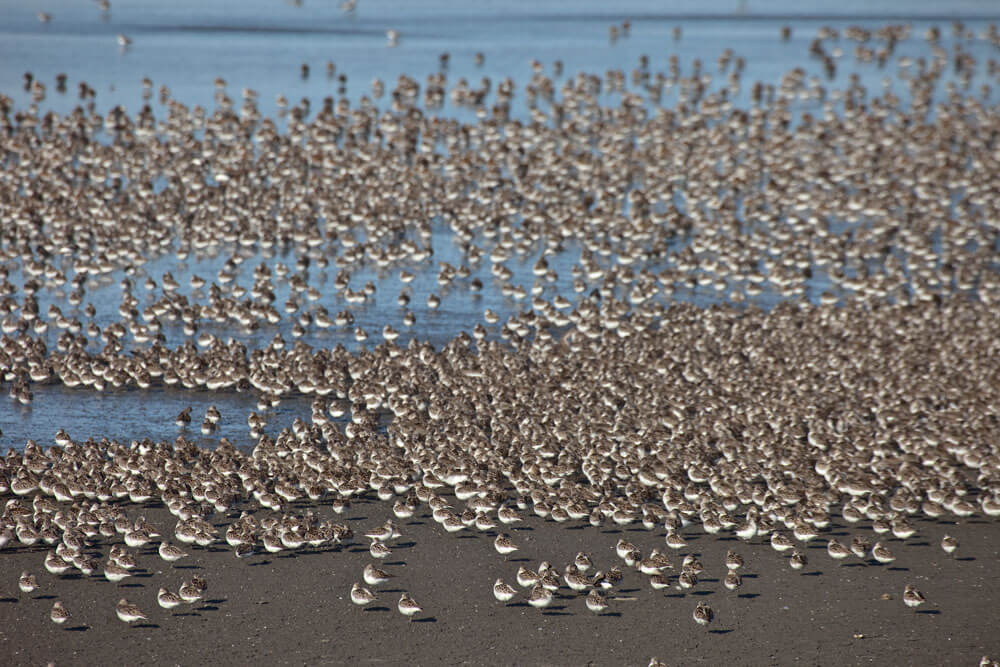
Semipalmated Sandpipers on Delaware Bay. Photo: Jan van de Kam.
We also need to ensure that we continue to support other stopover sites on the Atlantic coast so that while the horseshoe crab population is recovering, we continue to have other options for Red Knots and all migrating shorebirds. Fellow WHSRN sites like Monomoy on Cape Cod, the Barrier Islands of Maryland and Virginia, South Carolina coast, and the Georgia coast all host shorebirds, include Red Knots on their northern journey. To learn more about what site partners at these sites are doing for shorebirds, explore the network of WHSRN sites.
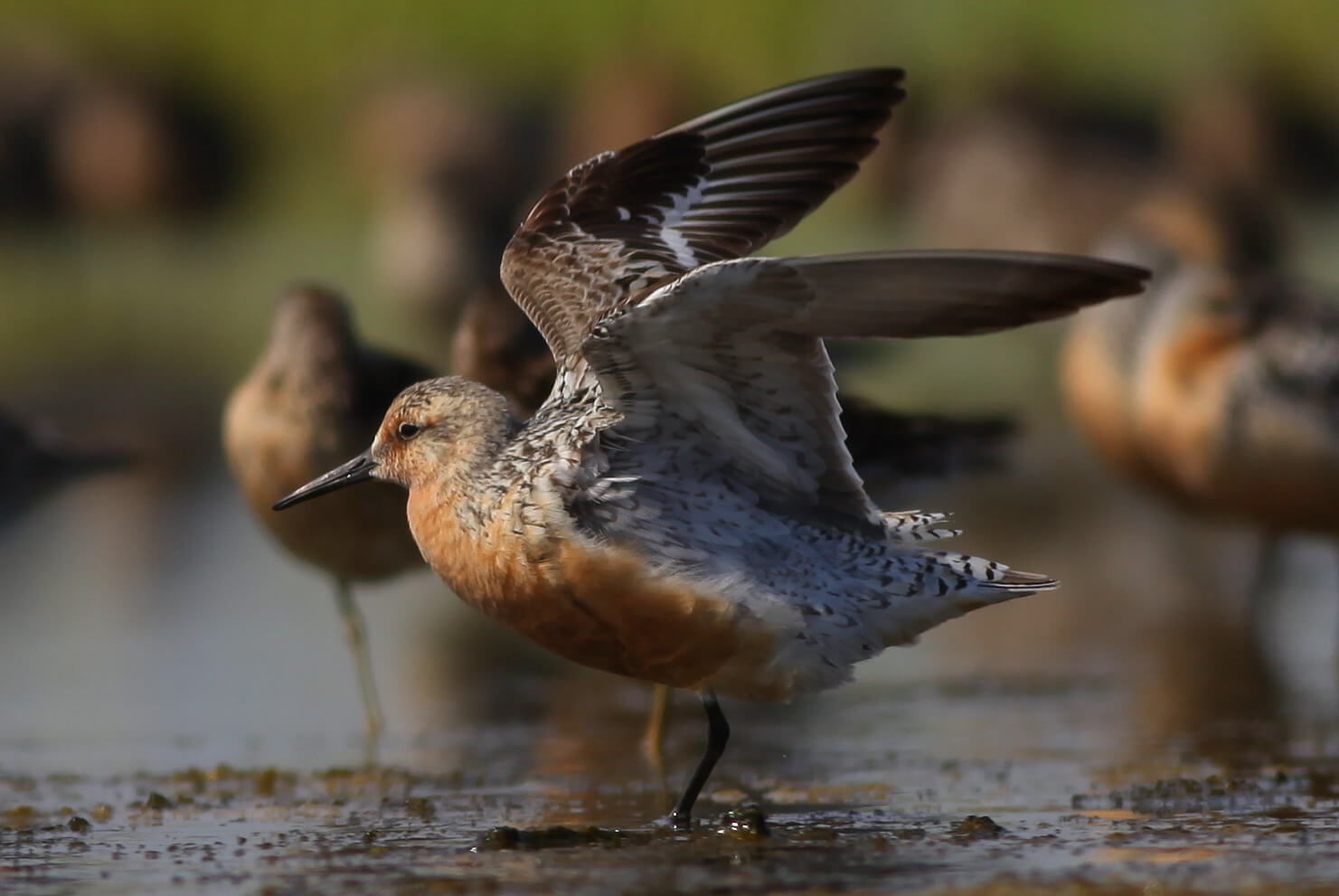
Red Knot. Photo: Brad Winn.
For more on this year’s numbers and horseshoe crab population recovery, visit the blog of one of Delaware Bay’s leading shorebird biologists, Larry Niles.
Cover Photo: rufa Red Knots. Photo: Maina Handmaker.





